After Will Stuart and I left Jones Gap State Park (see previous post), we drove up to a little known state Heritage Preserve called Watson-Cooper Heritage Preserve. Among the other interesting wildflowers in the preserve, there is one, Helonias bullata or Swamp Pink, that stands out from all of the rest. It is a federally threatened species. In South Carolina it is known only from a single montane (mountain) bog. Well, technically, it’s a fen and not a bog, but I digress… I believe this site is the southernmost site in the United States, and we are very lucky to have it in Greenville County.
The flowers are wonderfully fragrant, and in a good year, you can smell them before you arrive at the bog. What I like most about the flowers are the pink petals in association with blue and white stamens. From a distance, the flowers have a purple blush:
An online wikipedia article describes this delightful wildflower as:
Swamp Pink (Helonias bullata) is a rare perennial rhizomatous herb native to the United States. The root system is extensive in comparison to the apparent size of the plant on the surface. Blooming in March to May, its fragrant flowers are pink and occur in a cluster at the end a vertical spike which may reach up to 3′ in height. It has evergreen, lance-shaped, and parallel-veined leaves ranging from dark green to light yellow green in color that form a basal rosette.
I recently took some pictures of a group of these plants which were unfortunate enough to have their rhizomes exposed by a new water channel through the fen:

I’m fortunate to see these, since I’d never dig one up. The rhizome is quite large, and must hold an extensive reserve of energy for the plant.
In early April, the plant begins to expose a flower bud in the center of the set of basal leaves:
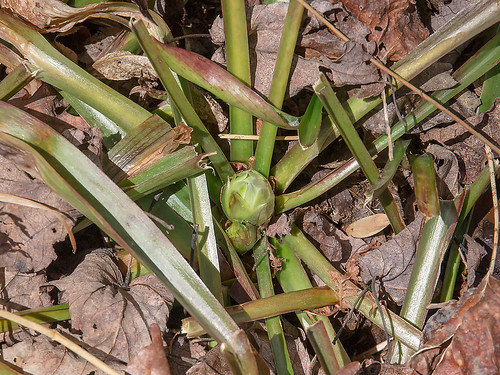
Just below the bud, there is a sprout that will become this year’s leaves. Often, one plant will produce several leaf sprouts even though it will produce only a single flower bud.
As the bud grows, the separate, unopend flowers can be seen protruding from the bud’s protective casing:

There is something else to notice in this image — the strap-like leaves have been chewed off by what I presume is a deer. Perhaps this is why the yield of flowers is low this year.
As the flower stem extends, the entire cluster of flower buds becomes visible. A bit of pink color is becoming prominent on the flower buds. Note the red color of last year’s leaves and the bright green color of this year’s leaf sprout:
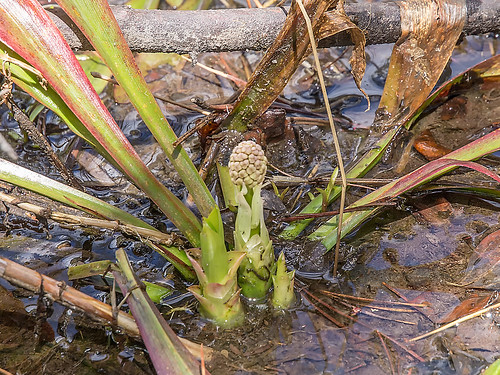
About a week later, the result is breathtaking:
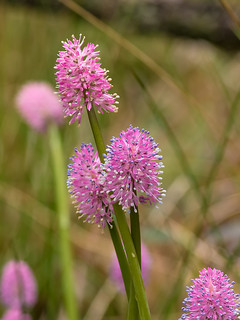 |
 |
 |
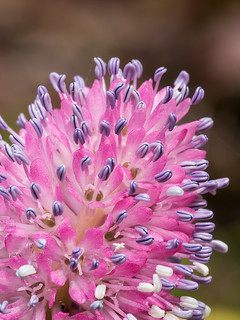 |
Apparently, there are a number of different pollinators, because we saw several species visiting the flowers — mostly Bombus species:
 |
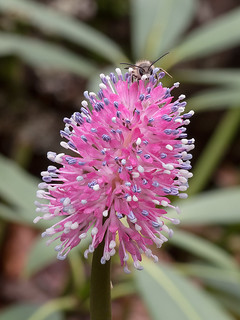 |
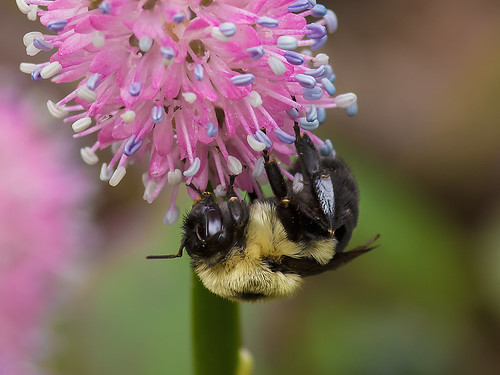
Here is an image from the 2009 blooming — quite a spectacular sight:
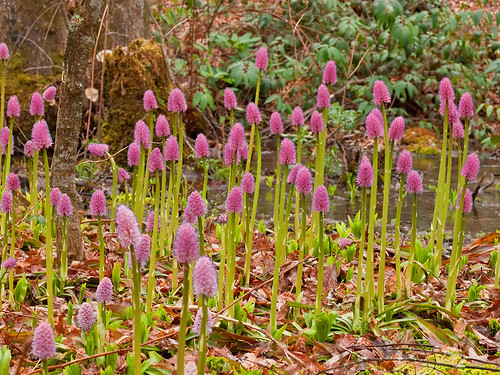
At this point in their growth, the flower stems are about 12 to 15 inches (30 to 40 cm) tall. Note the reddish, strap-like leaves from last year and the bright green leaves from this year.
As the seed capsules develop and mature, the flower stem will continue to elongate until it is about 40 to 48 inches (100 to 120 cm) tall! The seeds have a round, wing-like structure, but they are heavy and do not blow very far from the plant that produced them.
Finally, the end to another wonderful botanizing day with great weather and companionship. We are so fortunate that South Carolina has seen fit to preserve our few remaining botanical treasures for future generations. Let’s hope we can protect these plants and see that they have the environment they need to flourish…
— Jim


0 Responses
I just saw this plant mentioned in an old book. I looked it up and found your site. Beautiful plant photos and text. I live in California and we dont have this plant. Thank you